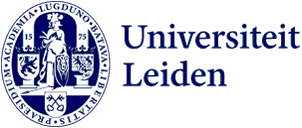
Rubicon grant for Remko Fermin: superconducting diodes for energy-efficient data centres
How can physics help reduce emissions from energy-guzzling data centres? With a Rubicon grant, physicist Remko Fermin will conduct fundamental research on superconducting diodes at the University of Cambridge in the United Kingdom. Diodes are like a one-way street for current and therefore crucial for electronic devices.
‘Simply put, I make superconducting materials in geometric shapes to investigate whether that yields special properties,’ Fermin says. During his doctoral research at the Leiden Institute of Physics, he and colleagues discovered that a tiny, elliptical magnet with two superconducting contacts on it could serve as a memory element. ‘The physics in this device is very interesting, but it also has potential for applications.’

From superconducting memory elements to diodes
Although the element is not yet scalable, this technique has one major advantage, Fermin explains. ‘In a superconductor, the electrical resistance is missing. And therefore no energy is lost in the form of heat. You do have to cool the system extremely, but that is certainly possible for large computers - such as data centres, for example. Those currently cause about 1% of global CO2 emissions. And with the rise of cloud computing and artificial intelligence, it is becoming increasingly important to develop energy-saving techniques.’
With the Rubicon grant, the researcher will build on this research, focusing on the superconducting diode effect. In a diode (see box), current flows in one direction but is virtually blocked in the other. ‘The superconducting version lets a normal current pass in one direction and a superconducting current in the other - which therefore does not consume energy,’ Fermin says.
The diode: the unknown hero of electronic devices
A diode is a small electronic element that allows electricity to flow in only one direction, sort of like a one-way street. This tiny component is crucial to the operation of all your favourite devices. They are mainly used to convert alternating current into direct current, which is important for charging batteries and powering many electrical devices. But even a LED bulb, for example, is a diode (the name already gives it away, Light Emitting Diode). The diode effect is also the basis for transistors, the building blocks of computer chips.

Breaking symmetries
There are two conditions for the diode effect: breaking the so-called time-reversal symmetry and inversion symmetry. ‘The first symmetry can be compared to a street with all the exact same houses. You can't tell if you're walking forward or backwards. But if there's a lamppost on one side of the street, suddenly there's a ‘back’ and ‘forth’. The direction of the magnetic field has this role in breaking the time-reversal symmetry. Suppose time were to go backwards, then the field points in the opposite direction.’
And then breaking the inversion symmetry. Fermin illustrates this with the helix in a DNA strand. It can rotate left or right and thus is not symmetrical. ‘In a disc-shaped magnet, you see this as well. The magnetic field goes around like a vortex. But in the middle, the field sticks out of the plane, either forward or backwards. That breaks the symmetry. I think that makes it possible to generate the diode effect in such a material.’
Tinkering with molecules
Fermin has already figured out his first experiment: a kind of disc-shaped sandwich of superconductors with a magnet in between so that current flows through the centre of the magnetic vortex. He also has a second plan in mind. ‘As an alternative to the magnet, I also want to experiment with chiral molecules. These are molecules that, like DNA, rotate left or right. So these also meet the requirement of breaking the inversion symmetry. I have never worked with molecules before, but the group in Cambridge has experience with it.’ He laughs: ‘And if it turns out that none of this works, there are plenty of other interesting things to study.’
With the Rubicon grant, NWO and ZonMw offer young researchers the opportunity to do research at a foreign institution. Promising researchers thus gain international research experience that is crucial for their future in academia. The awardees can work for one or two years at a research institution of their choice.
